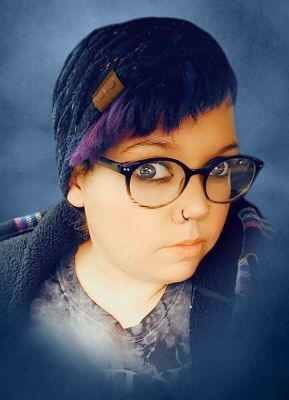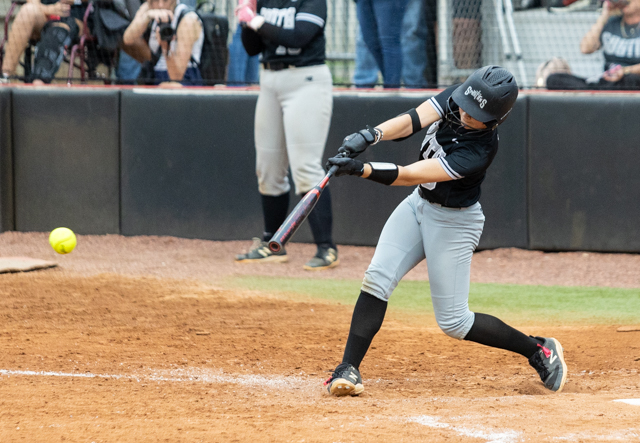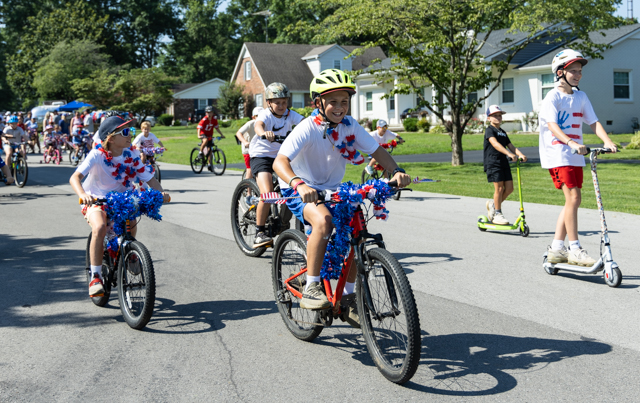How to Create Spooky Halloween Photography
Published 12:00 am Thursday, September 29, 2011

- Unique gravestone at Glasgow Municipal Cemetery in Glasgow, KY. By Amber Flowers, SoulGazePhotography.com.
At an old haunted house, just outside of town, darkness falls as a mysterious fog rises from the earth. The occasional hoot of an owl can be heard in the trees nearby. A coyote pierces the air with its haunting howl. Darkness hides the spooks of the night and their sounds cause goose bumps to raise the hair on the back of your neck. The full moon rising casts a somber glow across the landscape. The shadows all appear to be moving around you. Suddenly a bright flash of light temporarily blinds you. Quietly, almost as if far away, you hear your subject exclaim, “Wow, that was bright!” Checking your viewfinder, you find your best Halloween photo yet.
Photographers, get ready for a fright! Halloween is one of the most creative opportunities for photographers. Full of mischievous children dressed in a wide variety of costumes, houses competing to be the creepiest on the block and fall harvest decorations are all worthy opportunities. The question for some is how to capture this magical holiday and remember the creativity and excitement while lending supernatural fear to your images?
The best time to capture your spooky images is right before sunset when the low light creates mysteriously orange light and dark shadows or right after sunrise when the morning dew and fog create a quiet, eerie world. Take some time a day or two before Halloween and start ‘scouting’ for locations with Halloween potential. Run down, dilapidated houses are a great backdrop choice for Halloween portraits day or night. Just ensure you have permission to be on the property and consider the safety of you and your ‘victims’. Never enter an abandoned house or building to take photos. They are rarely structurally sound. Plus, who knows, there really may be a ghost inside! In reality, there could be an animal such as a coyote making it their home, which can be very dangerous. A great idea for a Halloween night portrait is to use a tripod (to prevent camera shake) with a long exposure (newer cameras allow a higher ISO with less noise and shorter long exposure times) and capture the abandoned house. If you’re lucky enough to have Halloween on a clear night, try to find a house with little ambient light so your exposure can also capture the stars. Use your flash as fill-light to illuminate your subjects, but don’t go overboard and overexpose or blind them. You can also compose this shot separately and combine a properly exposed house and subject in Photoshop. It’s as simple as erasing away the part of the image you no longer want and blending the two together. There are many different ways to do this from layer masks, to eraser tool and more. If you plan to use this method, you will definitely need to use a tripod so the scenes match saving time attempting to line up the images. This technique can work on a point and shoot camera, but works best with a DSLR and an off camera flash. Multiple flashes can be used for even better creative lighting. Some other options include safely (and after permission) using candles and/or campfire for lighting. The eerie glow casts somber shadows on your subject. Halloween face paint and the right lighting can result and a photographer capturing photorealistic zombies and witches. Just don’t forget to put out your fire or something a lot scarier than ghosts will be coming after you!
For those who prefer to capture the prettier side of Halloween, consider photographing your scouted locations during the day. Use the early morning or late afternoon light for that gorgeous orange glow. Fall colors in the trees with Halloween decorations make great backgrounds for all ages and especially family Halloween portraits. Most area churches host a ‘Trunk or Treat’ so area children can enjoy a safe, family friendly Halloween. Sometimes these events have games, food and other activities which can also be an interesting way to capture Halloween.
You can visit local cemeteries for some interestingly spooky portraits, but remember to respect the dead or they just might haunt you. Overcast days are great for diffusing the light for evenly lit monuments without harsh shadows or being overexposed from the sun. If you’re really brave, get permission to visit a local cemetery at night. If you believe in ghosts, you never know what you might capture in the background. This type of shot would be great with a fog machine (need a power source) and full moon on a long exposure. The same applies for houses with only jack-o-lanterns, candles or Halloween lights for decorations. Great shots can be captured by using flash, but Halloween shots are best when captured with the darkness showing the scene as spooky as it truly is.
Using Photoshop and other digital programs, you can further enhance your spooky photography. Images can be darkened to achieve true blacks or selectively colored to black and white leaving for instance, only the orange pumpkins in color. You can play around with negative effects and other filters. You can also insert low-opacity ghosts in windows, doorways or behind your subject using ghost brushes you can download online. Create a scene of your darkest imagination using legally obtained stock photography and some practice! You can even brush in realistic fog and mist or overlay textures to provide a more vintage feel and antique look. Browsing online you can download premade Photoshop actions allowing you to just ‘play’ them and create vintage effects such as sepia and those similar to old tintype photos. For families, you can also create Halloween greeting cards to showcase your photography. Templates can be downloaded online or you can create your own. Don’t forget to download and install creative and unique Halloween fonts for your templates and digital designs.
To create a ghost: Open your image in Photoshop and do all your final adjustments. Then create a new layer on top of your current layer. It’s never a good idea to work on your main layer because unless you take regular history snapshots or save multiple versions (taking up more computer space) you have to start over. Then select the ‘brush’ tool and select the size for your ghost and ‘paint’ it into your image using a white brush. Then adjust the opacity of your layer. The more transparent your ghost is, the more believable. You want the viewer to be looking at your image and get a sudden shock, not see the ghost right off. You can use CTRL+T to resize your ghost’s layer and that’s it! Ensure your ghost isn’t overlapping areas that you don’t want (use the eraser tool) and then you can save as a Photoshop file to retain the layer for future changes. Save again as a JPEG or the file type you prefer for sharing. You can download ghost brushes for Photoshop 7+ and Gimp by Obsidian Dawn. These have instructions on the same page and are the ones used in my sample image (www.obsidiandawn.com/ghosts-photoshop-gimp-brushes). You can also find more brushes and goodies online incase these are not compatible with your version. There are also many other ways to do this in your programs other than this beginner tutorial so don’t be afraid to experiment.
Halloween is a holiday like no other. It comes once a year and enables you to experiment and be creative. Let your imagination and thoughts of that which fears us guide you. Halloween photography can be more creative and easier than it seems…don’t let it scare you!
 About the author: Amber Flowers, Owner of Soul Gaze Photography, is a photographer, digital artist and writer most known for her infrared photography and the ‘fine art’ feel to her work. She is Founder of Southern Kentucky Photographer’s Club and a member of The League of Creative Infrared Photographers. Amber resides in Glasgow KY with her Husband, two children and several pets. Learn more, ask questions or purchase fine art photography: www.soulgazephotography.com
About the author: Amber Flowers, Owner of Soul Gaze Photography, is a photographer, digital artist and writer most known for her infrared photography and the ‘fine art’ feel to her work. She is Founder of Southern Kentucky Photographer’s Club and a member of The League of Creative Infrared Photographers. Amber resides in Glasgow KY with her Husband, two children and several pets. Learn more, ask questions or purchase fine art photography: www.soulgazephotography.com






